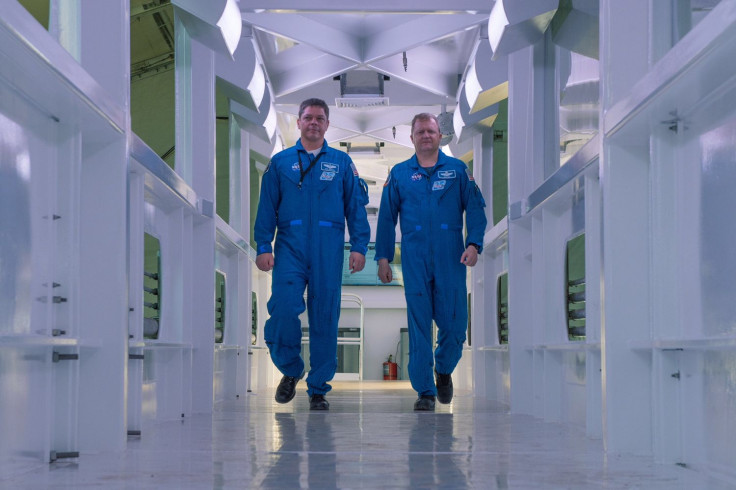SpaceX Sets Up Crew Access Arm For Flying Astronauts Into Space

At launchpad 39A of NASA’s Kennedy Space Centre, SpaceX has installed a Crew Access Arm, which would be used as a "bridge" to let astronauts walk into Crew Dragon – the spacecraft designed to fly them into space.
Just like jetways that connect airport lounges with airliners, the walkway developed by the company would be connecting the crew access tower at the launchpad and the Crew Dragon spacecraft sitting atop the company’s massive 230-feet tall Falcon 9 rocket.
The access arm was in the works for months and was installed at the launch complex Monday. According to a report in SpaceflightNow, it sits much higher up – approx. 70 feet – than the walkway used to provide access to the agency’s now retired Shuttle Orbiters at the previous Fixed Structure Service version of the same launch pad.
Over last few years, SpaceX has been configuring the historic launchpad to prepare it satellite launches, commercial cargo resupply missions, and crewed spaceflights. The company, according to NASA, has removed over 500,000 pounds of steel from the complex, including the rotating service structure that used to provide access to the payload zone of the space shuttle.
That said, the latest development takes SpaceX a step closer towards conducting first manned flights under NASA’s Commercial Crew Program – an effort to bring human spaceflight capabilities back to the US for the first time since the retirement of the shuttle program in 2011.
Crew access arm installed at Launch Complex 39A in Florida; will serve as a bridge for @NASA astronauts to board Crew Dragon. pic.twitter.com/E9OXAOGWtQ
— SpaceX (@SpaceX) August 25, 2018
As part of the program, SpaceX will conduct two demonstration missions, an uncrewed test flight in November 2018 and a crewed flight in April 2019, where NASA astronauts Bob Behnken and Doug Hurley will fly to and from the International Space Station (ISS).
The manned demonstration, named DEMO-2, will be conducted with the same spacecraft configuration used in the unmanned flight. This way, the astronauts will get an opportunity to test the functioning of the onboard systems, communication tools, and manual controls. The Crew Dragon will dock and undock with the space station and then return back to Earth.
After this, the data from the flight will be verified by NASA to determine if the spacecraft meets safety and performance requirements and are suitable for regular operational missions to the ISS in future. A similar series of test flights will be conducted with Boeing’s Starliner spacecraft, too.
SpaceX and Boeing have been given a contract of six operational flights to and from the ISS. Though space capsules from both companies can carry as many as seven astronauts, the operational missions will have a maximum of four astronauts onboard, per NASA. On the SpaceX flight, two of these will be spaceflight veterans Mike Hopkins and Victor Glover, while the others will be named later.
© Copyright IBTimes 2024. All rights reserved.





















